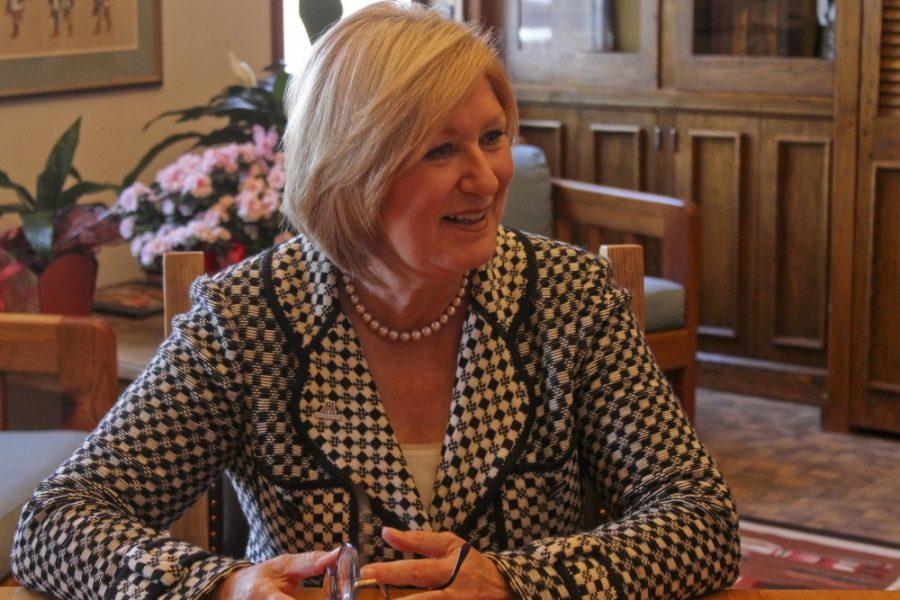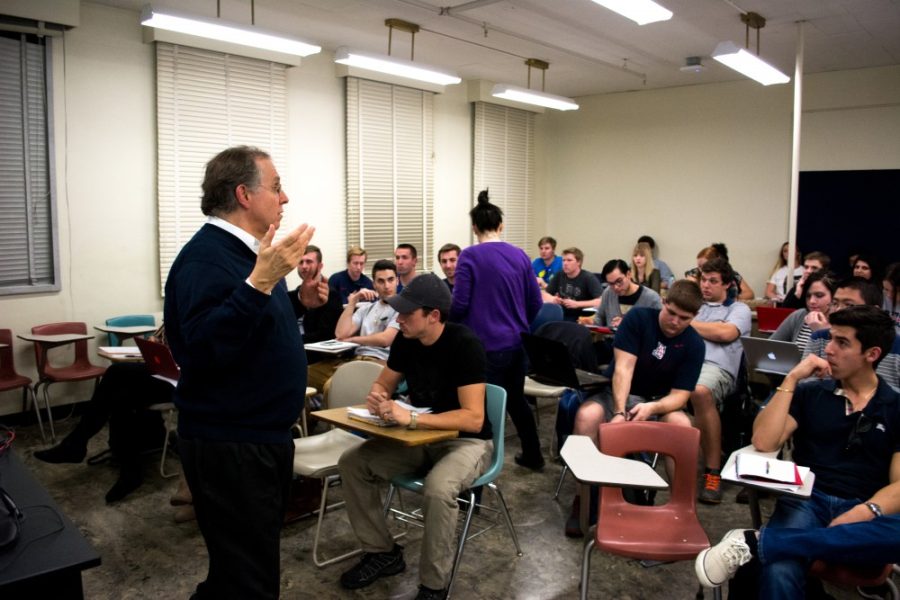In February, the Arizona Board of Regents chose Ann Weaver Hart to assume the position of university president. Hart, who has degrees in history and educational administration from the University of Utah, has been in higher education administration for a number of years, having served as president of the University of New Hampshire and Temple University in Pennsylvania before coming to the UA. The Summer Wildcat sat down with Hart to discuss the goals over the course of her presidency at the UA.
Summer Wildcat: During your welcome event the other day, you compared the UA to a “gold buckle,” the top award given in bareback horse riding. Does that western mentality come from growing up in Salt Lake City?
Hart: Actually, I heard the metaphor for the first time in Colorado when I was dean of the graduate school and attended a council of graduate schools summer workshop. It really struck me, years and years and years ago, as a wonderful way to capture how important it is that we not become paralyzed by our challenges, and that if we really want to achieve greatness, we have to be put to the test and show what we can do.
We’re still in the first week of your arrival to Tucson. What are your priorities this early on?
The very most important issues that are sitting right on my desk right now are some very critical executive leadership positions. We need to hire a new provost, we need to hire a senior vice president for the health sciences, we are looking for an executive director for our new Tech Launch Arizona initiative, and we are searching for a senior vice president for external relations.
During one of your first visits to the UA as a candidate, you said you were going to have to develop a trusting relationship with students, faculty and staff. How do you go about developing that relationship?
I’ve already started making my list and checking it twice. It’s important to begin with the formal shared governance groups that represent our students and who represent our faculty and staff: the APAC (Appointed Professionals Advisory Council), the Faculty Senate, the graduate student leadership and the undergraduate student leadership. I already have meetings scheduled with all of those groups. Obviously it’s going to take a lot of time and it’s a lifetime career time commitment, but I’m going to persist.
The UA has a prestigious reputation as a research university, an athletic institution and as a relaxed place to attend college, mainly because of the climate and culture in Tucson. How do you plan to continue balancing those images?
I would use the word “integrate” instead of “balance,” because then you can magnify your success by playing off those strengths and unifying the way that they become copacetic. Our great athletic tradition creates a fantastic opportunity to get together, have a wonderful time, celebrate our loyalty to the University of Arizona and build spirit as an institution. Our incredible achievements academically provide an opportunity for our faculty to achieve for our students to work with the very best faculty in the world. The relaxed atmosphere gives us an opportunity to interact with one another on a less formal basis, which I find very gratifying.
You’re the UA’s 21st president, but the first woman to take the office. As a woman in a leadership role, do you think we’re beginning to get rid of the “glass ceiling” idea at least in higher education?
I think I would characterize it as learning to take advantage of the skills, talent and hard work of everyone, whether you’re a man or a woman, and to do that skillfully and without getting tied up in our old expectations of what a leader looks like, what characteristics a leader has. That’s a broadening of our definition of “talent,” and also a learning process where we become more expert at working with people who are not exactly like us.
How will leading a university in the middle of the desert differ from leading a university on the east coast, either in terms of climate, demographics or otherwise?
I think the demographics in particular are unique to each area in which I have worked. Northern New England is very different than north Philadelphia. Each area has its own groups that are traditionally in power and traditionally seeking more inclusion. But the challenges are very, very similar.
How do you feel about ASU?
[Laughs]
ASU is a sister institution with different talents, expertise and mission than the U of A. I think more about what the U of A is going to become and be, and worry less about what ASU is.
… And we’re going to beat them every time we play them, so there’s nothing to really worry about since we always triumph.
Anything to add?
It’s a tremendous honor to be here, and I have been so impressed with our students. I got great advice to always wear sunscreen, shouted out from the audience. And from the faculty and students, this place has incredible talent and loyalty at all levels, and so being a part of a team with that depth … that’s very exciting for me.
Here’s how Hart’s contract breaks down over the next three years:
- Base annual salary of $475,000
- Annual retirement program of $85,500
- Annual housing allowance of $50,000
- Annual vehicle allowance of $10,000
- One-time moving fee reimbursement, not to exceed $20,000
- One-time transition payment of $100,000, not from university funds









